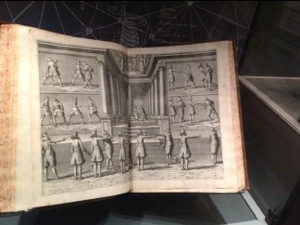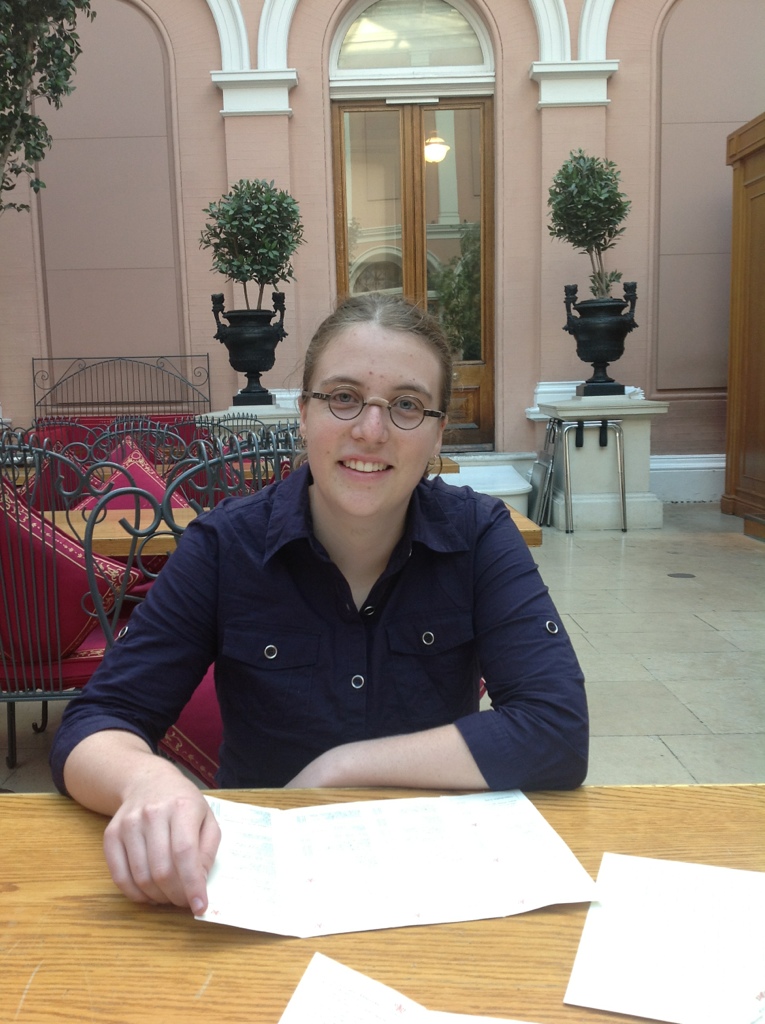So. Last weekend was the Swordplay ’11 event, over three days. A quick summary of the weekend:
Friday – catching up with folk I’d not seen for a while, and having some fun play bouts – sword and targe versus sword and buckler with Tim was particularly amusing as I found it nigh impossible to either get around the targe or trick him into doing something silly. We trotted off to lunch at the Flying Nun, during which the heavens opened up and dumped a considerable amount of rain while we tried to convince Puck Curtis that it never rains at this time of year. Through the afternoon I had the distinct pleasure of an impromptu Destreza-101 from Puck, where he dumped about six months of lessons into us in a few hours. The guy is not only a really good swordsman, he’s an outstanding teacher.
Saturday was given over to a full day workshop with Puck, which he broke into two parts. Just over half the day was devoted to working through a set of 10 drills from Rada, and the rest to a flying trup through the basic principles of Destreza, built on top of the Rada drills. Chatting with Puck he mentioned that a translation of Rada is in progress and should be appearing online soon, something which I’m particularly looking forward to: not only are they a nice set of drills just for the sake of drilling, they are beautifully constructed from a didactic and pedagogical point of view. Each builds on the previous, they are self-correcting, and they each allow exploration of variations and subtelties. Touch wood I can turn them into a daily exercise next year.
Sunday was necessarily tied up with the tournament, which flowed very nicely. I’ve mentioned it elsewhere, but I was particularly struck by the high degree of courtesy and civility between all participants, by the good quality of the fencing, and came away convinced that the outcome of the tournament was an accurate reflection of the quality of the fencers and a quality of their play. The rules have been simplified and refined over the past few years, and this eliminated the ways in which the scoring system could be deliberately or inadvertently gamed.
The structure of the tournament was tinkered as well, with a “sword” tournament, a “longsword” tournament intended to encourage the Germanic schools to play, and a “mixed” or “open” tournament for the top few particpants in the other two to come together with their weapons of choice. Which pretty well resulted in a lot of longsword versus rapier and dagger, which was great fun for everyone. All in all a significant success for Scott MacDonald.
I’d entered the tournaments for the hell of it, and really didn’t care much about my personal outcomes. I had fun and learned things, and that was and is the only thing that matters to me. Having said that, I want to make some quick notes about my bouts while they are fresh in my mind, so that I can figure out how to improve.
My first longsword bout was with Cassian Humphries. Me in the longsword was a bit silly, as I’ve done very little serious longsword study, and tend to just bang around with a bit of PSSF stuff, a bit of Fiore-ish stuff, and a bit of German-ish stuff. And because we’d had the workshops on Saturday, a bit of Destreza. Cassian had done even less longsword than me, but he’s bigger than me, a lot faster, and a hell of a lot stronger. I did manage to take the bout to sudden-death using a variety of old-man-cunning tricks, but he kept cutting me across the stomach. It wasn’t until a lot later in the day that I could see what he was doing, with a techinque that he’d picked up somewhere and used repeatedly, and effectively: when he was ready to jump in and commit, he’d drop his sword down to the side a bit, do an enormously strong beat with the false edge on a rising cut, then bring it back in a screamingly fast horizontal cut across the belly. I just wish I’d spotted it earlier!
The second longsword bout was a bit of a cheat, as I played with Delia. The trouble with that is because we know each other so well, I was able to just rely on outreaching her, or outmuscling her by taking her sword high and swatting her as she released. All things I will not get away with again.
The way the tournament draw worked (there were an odd number of particpants, so the odd man out at each level fenced a randomly drawn loser from the previous round), I lucked out and went up with Cassian again. The result was fair and unambiguous: as Chris Slee said, I didn’t cover my belly and got hit across it repeatedly. My own sily damned fault. The ultimate reason for it though was interesting: each pass, I resolved to just hang out and wait for Cassian to come to me, to deal with him on my terms. And each time, after waiting a while, the PSSF instinct tickled my brain “hey, nothing’s happening, it’s boring for the audience, do something”, and in I would go, throwing something to draw out a response – which he ignored each time, did the false-edge beat, and cut me across the gut. So it goes.
My initial sword bout with Tim Harris was great fun. I think I had poor Tim at a disadvantage – we’d talked about what combination of weapons we might play with before hand, and I was encouraging him to use his targe, but he opted out of courtesy for the rules to use a borrowed buckler instead with his backsword. I’d also borrowed a sword, to fit in the weapons specification, and found it was a lovely little snakey thing that moved like lightning. Thus it felt like Tim was caught out by the buckler being smaller than he expected, and I was able to sneak shots over the top. For some reason we kept getting stuck in the corner – it could have been that’s where the shade was best!
The next sword bout was fun, but highlights my defects rather well. Bob Dodson is getting fast, and has developed good accuracy on the thrust. We had a yarn just before we went on and opted just to go for rapier alone, for the hell of it. The outcome was rather telling – any time I compromised my distance, Bob would pop in a thrust, usually to my right shoulder as I attempted one of the big open attacks we’re conditioned by PSSF to do. If I went far enough around to his right, I could get the cut or thrust over his sword into his head, but I found myself tired enough – and my right elbow was starting to really hurt again – that I couldn’t do that consistently, and he knocked me out of contention. And again, there’s no argument that the most martially correct fencing carried the day there.
Looking back over the notes above, which I’ve dribbled out through the day in gaps in my work, the word that sticks out is “fun”. I had fun in the competition bouts, and fun in the competition, which surprises me. I usually do not like or enjoy competition much, and very much prefer to play with swords in a context where I can just bash around and explore things, the sort of play where you can say “that was cool, do it again so I can figure it out”. On the other hand, I do agree with Scott MacDonald’s assertion: if you’re serious about studying these obsolete arts, you need to take it out and test drive your ideas.
The tournament component of Swordplay XX (and I really wish more people would remember that the tournament component is only a minor part of the event) is evolving into a really nice place to test yourself, and schools to test themselves. The atmosphere is collegiate and respectful, the stakes are low and abstract, and there’s no shame or loss in not coming out on top of the ladder.
Justin popped up to the top of all three bits of the tournament not because he’s fit, strong, fast, and tall. He’s taken in the sworplay ideas from his school, learned them well, and applied them with great technical competence. Next year he might do the same, or it might be someone else, and it doesn’t matter: the aim of the tournament is met, individuals and schools tested themselves, and everyone had fun doing it.
A final note though. It really saddened me that so few from PSSF came along on the Saturday, and to a lesser extent on the Friday. PSSF had a performance gig on Sunday, so it was understandable that people may not come to watch the tournament, and it is appreciable that folk may have trouble getting out of work on the Friday to take more advantage of the social fencing. But for folk to pass up the opportunity to attend a workshop with someone of Puck’s stature is inexplicable. For folk to pass up the opportunity to spend time with their peers and confreres from other states and schools is just sad. There’s nothing to lose in going out to have a bash around with other sword students, and much to gain. And the really silly thing? Once more people from other schools expressed disappointment that they couldn’t meet with and talk to PSSF students because they wanted to find out how PSSF achieves their fluidity and style.
The tongue-in-cheek motto that Scott has launched for Swordplay ’12 says it all: “If you’re not there, you’re not serious”.


